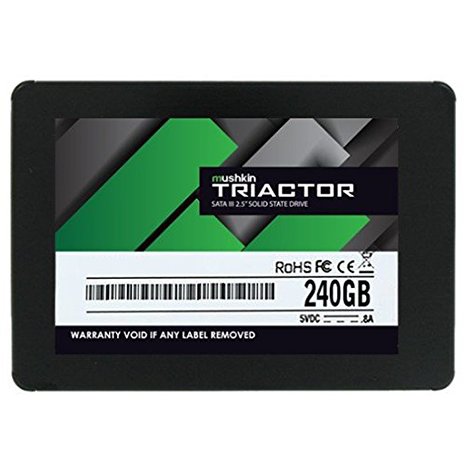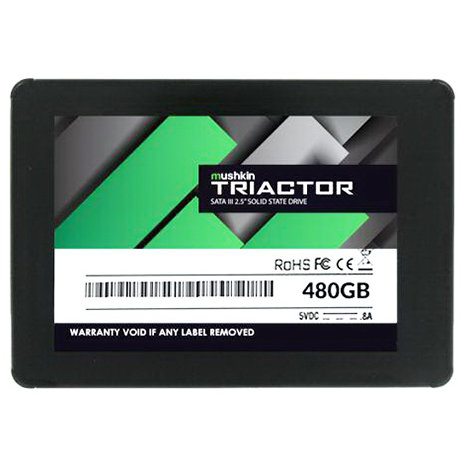Early Verdict
The Mushkin Triactor series is a low-key value SSD that delivers competitive performance in the entry-level category. Mushkin chose to use quality components to ensure data integrity over time and it found other ways to lower the price. We like the Triactor series for a secondary volume or as a primary drive on a light-use system. It's not a high-performance model, but at this price, it doesn't have to be.
Pros
- +
Low cost
- +
Acceptable performance
- +
Solid component configuration
Cons
- -
Entry-Level performance
- -
Lack of toolbox and disk cloning software
Why you can trust Tom's Hardware
Specifications And Features
Mushkin has quietly built several high-quality solid-state drives in its Texas manufacturing facility. Many of the Mushkin products sit quietly in the shadows and go unnoticed by the majority of users. Armed with a new state of the art manufacturing facility in Mexico, we expect higher output and a new brand push to get the word out about Mushkin Enhanced design and quality.

The Mushkin Triactor ships with an odd pairing. The drives utilize Silicon Motion, Inc.'s (SMI) low-cost SM2256 4-channel controller and SanDisk's 15nm TLC flash. The controller supports advanced low-density parity check (LDPC) error correction and control code, but it's an older version than the company uses on the newer SM2258. We rarely see SanDisk NAND used outside of company branded SSDs, but after the Western Digital acquisition more of the flash has spread to third-party SSD manufacturers.
Mushkin has built SSDs since the first early consumer SSDs came to market. As a memory manufacturer, Mushkin was alongside OCZ, Corsair, Kingston and Patriot with some of the earliest products available, but the company is one of the lower profile builders. Mushkin doesn't have a NAND flash fab or controller IP, so it has a small fraction of the market share compared to the fab-powered companies like Intel and Samsung. However, the company has a reputation for quality at a low price point, and we rarely hear anyone complain about Mushkin products.
Over the last year, the Mushkin Reactor with MLC flash has been on and off our Best SSDs list. The drive delivers a nice user experience at a price that is hard to overlook. The Triactor with TLC NAND looks to follow the same path. It utilizes quality components with an advanced cost-saving design and dedicated manufacturing. In some respects, the Triactor is a sleeper, but it's time to sound the alarm clock.
Technical Specifications
The Mushkin Triactor ships in a number of configurations that range from 120GB to 500GB. Mushkin announced a 1TB product, but we've never seen it listed for sale. In the chart above, we listed the standard 7% overprovisioning capacities of 120GB, 240GB, and 480GB. Mushkin also offers a few oddball sizes (250GB and 500GB) with less overprovisioning but nearly identical performance.
As mentioned, the Triactor users an older 4-channel SMI SM2256 controller designed for TLC flash. This was Silicon Motion's first TLC-specific controller. The SM2258 succeeded the SM2256, but came with support for Flash Forward (Toshiba and SanDisk) and IMFT (Intel and Micron) 3D TLC NAND. By using older technology, Mushkin was able to reduce the price of the Triactor series without sacrificing performance.
This is also one of the rare third-party products to ship with SanDisk flash. Our drives arrived prior to the Western Digital acquisition, but since the takeover, we've heard about more companies gaining access to the premium planar flash. Mushkin chose 15nm TLC for this product. Many of Mushkin's products span multiple NAND lithography nodes, so it's possible the company purchased a large amount of flash at a discounted price and the Triactor will have a variable build of materials.
Performance tips the scale at 560 MB/s sequential read and up to 515 MB/s sequential write on the two capacities that we have in for testing. The 120GB model musters 380 MB/s in the sequential write category. The write performance quoted by Mushkin is only 'up to' due to the 3-bit per cell NAND flash. The random performance comes in at 85,000/87,000 read/write IOPS for the 480GB model. The smaller drives see a slight reduction, as specified in the chart.
The Triactor series does not support hardware encryption. In this price class we often overlook the feature and many users on this end of the pricing scale that have access to the feature do not use it.
Pricing
We only found a few Triactor SSDs for sale at Newegg and Amazon. The 480GB and 240GB drives we are testing sell for $112 and $70, respectively. The 250GB drive sells for $70 and the new 500GB tips the scales at $120.
Warranty And Endurance
The Triactor ships with a limited 3-year warranty that Mushkin capped with a Terabytes Written (TBW) clause. The TBW rating serves as a general indication of how much data you can write to the drive before the warranty expires. The 120GB drive features a 58TBW rating, which is one of the lowest we've seen on a retail SSD. The rating increases to 115TBW on the 240GB and 250GB SSDs and moves up the scale to 230TBW for the 480GB and 500GB Triactor SSDs.
Packaging
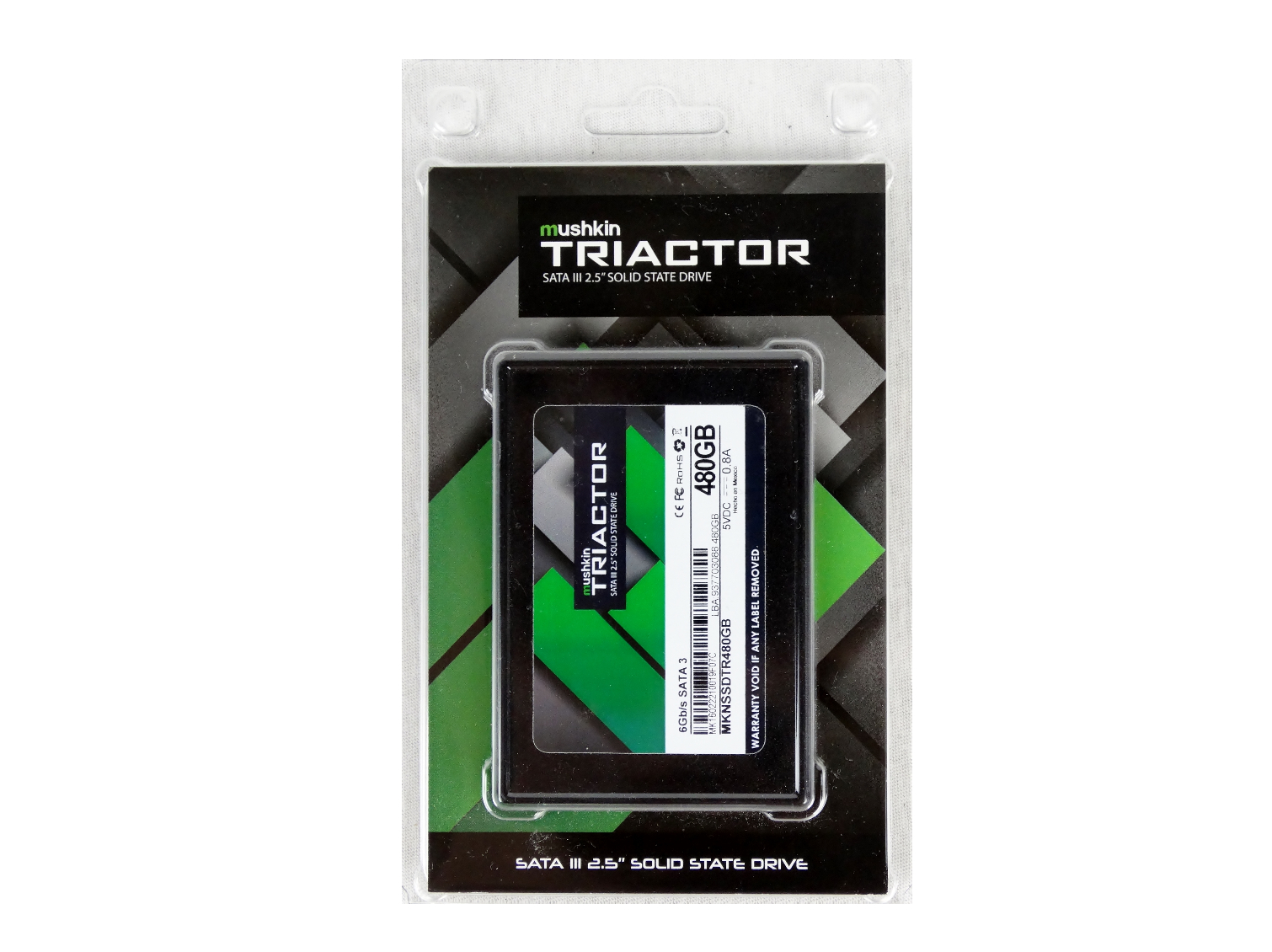
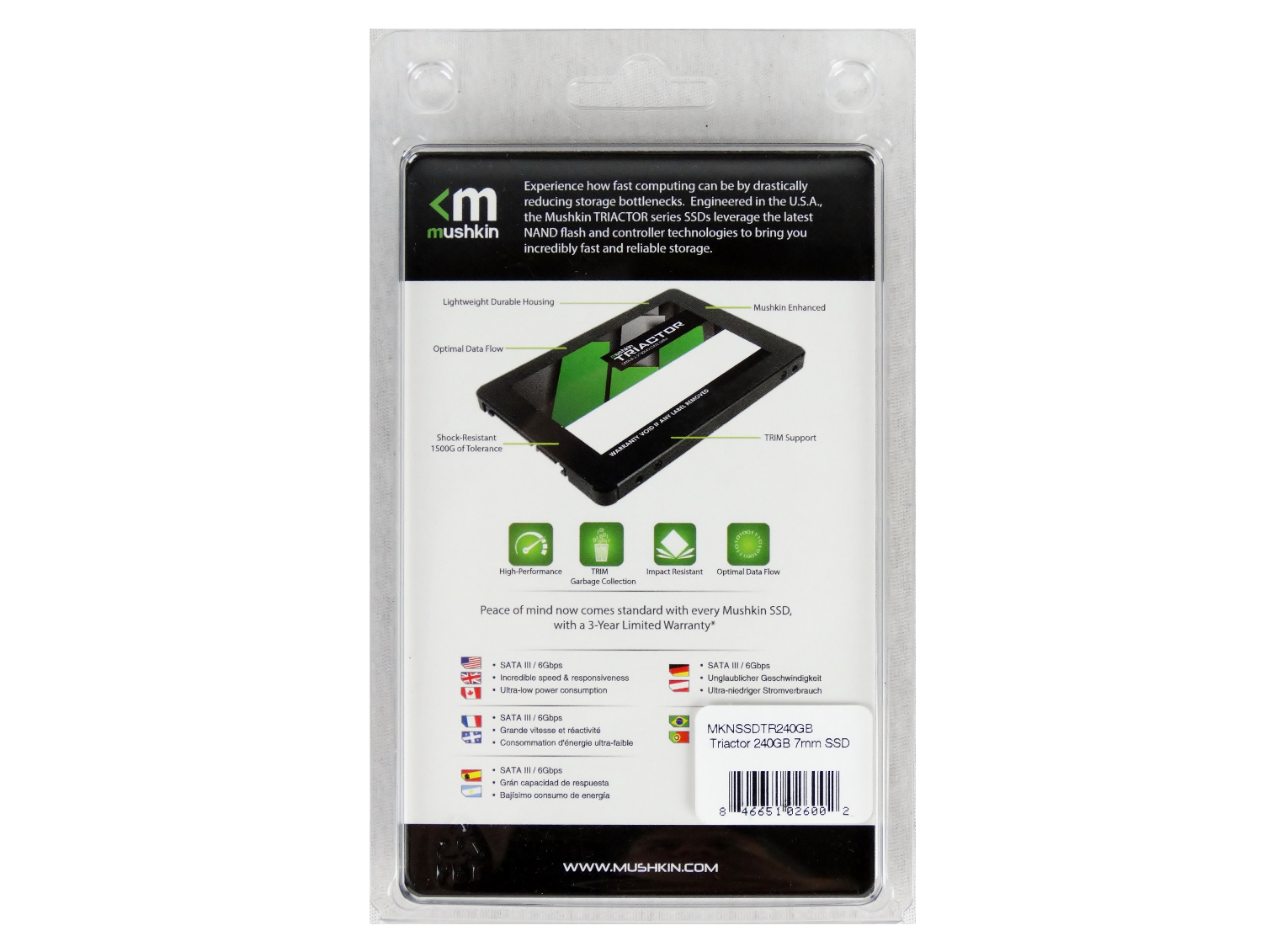
Mushkin used a low-cost blister pack to ship the Triactor, so it ships as a bare drive. This helps to keep costs low for end users.
A Closer Look

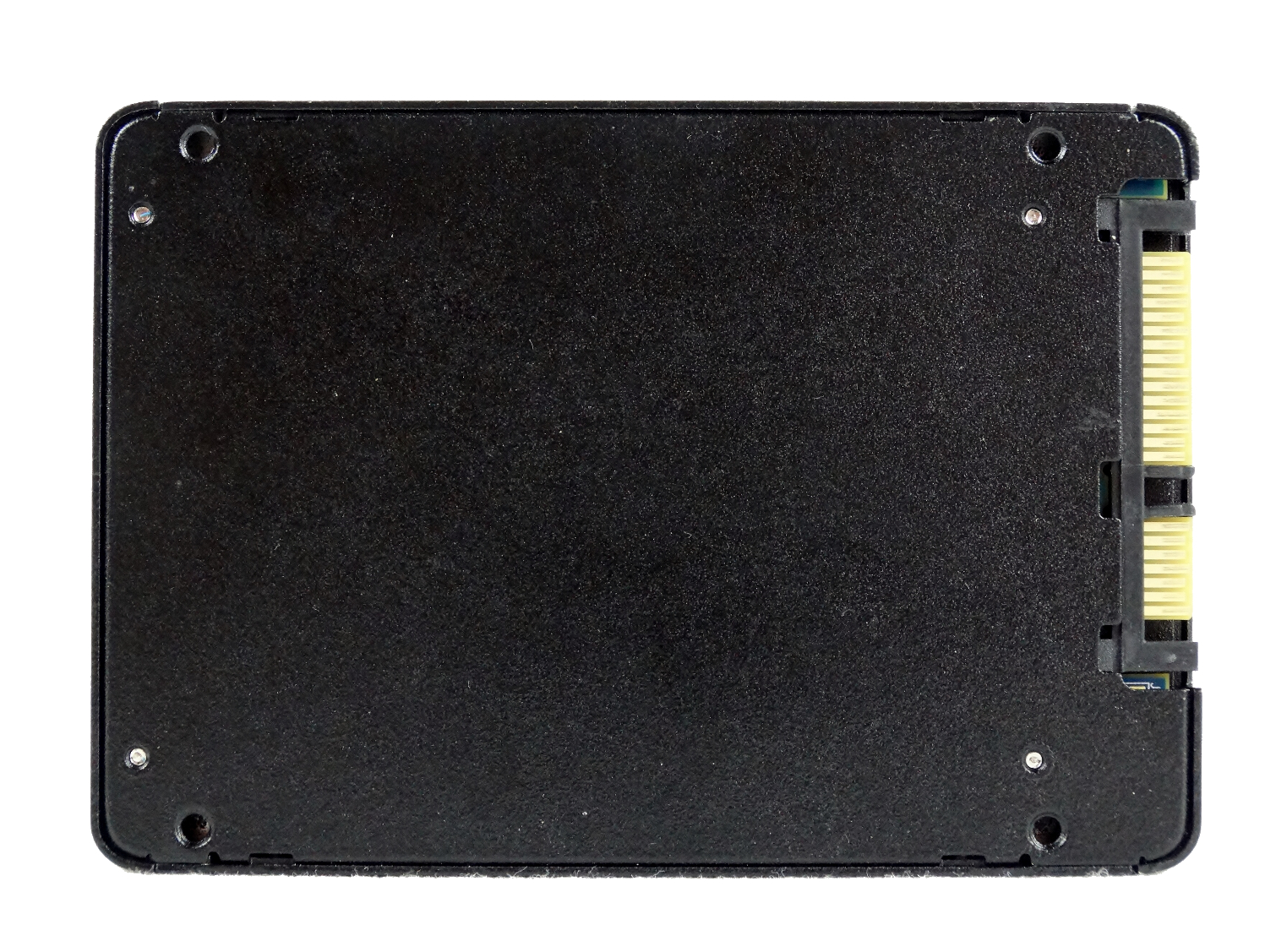

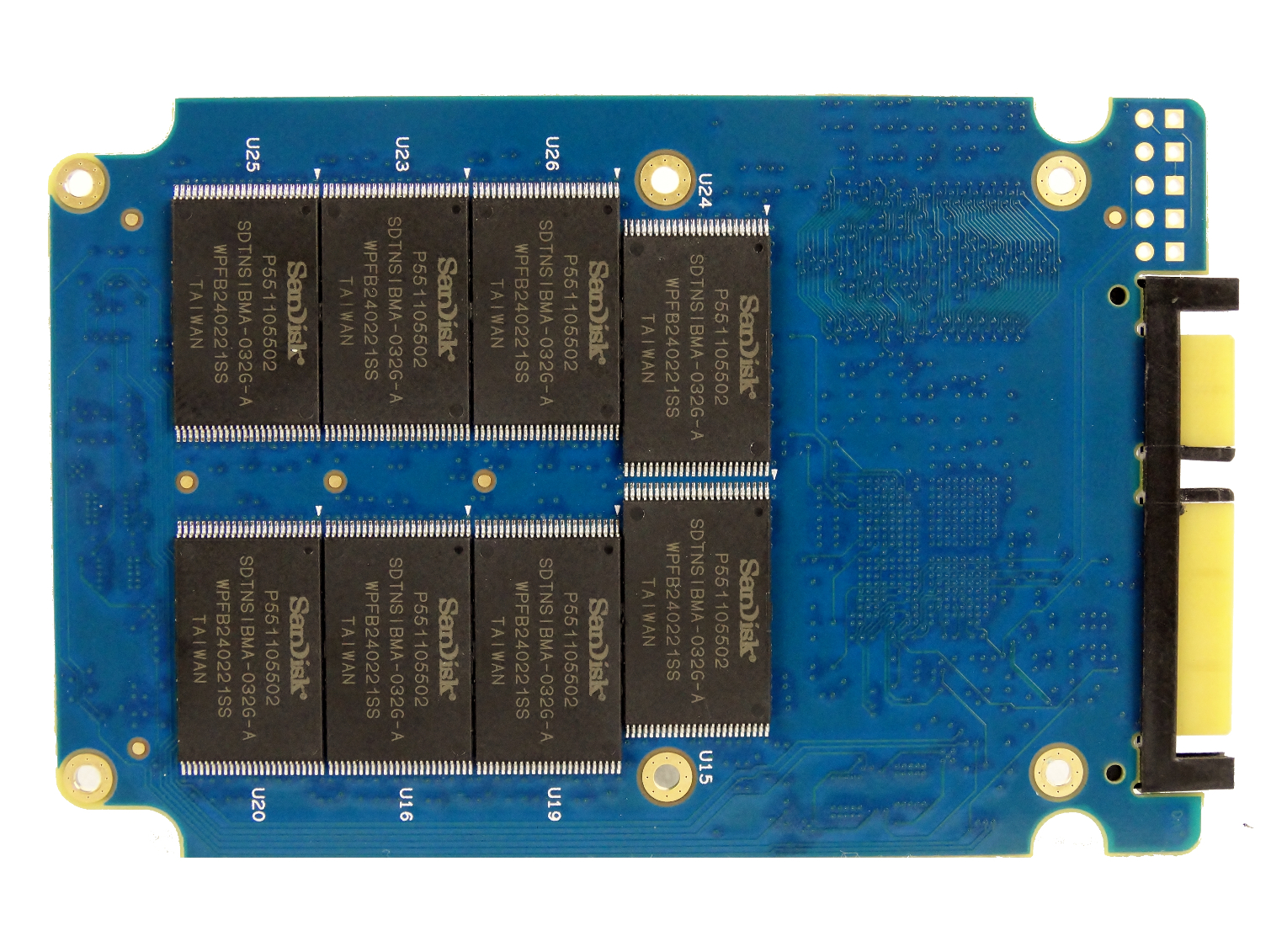
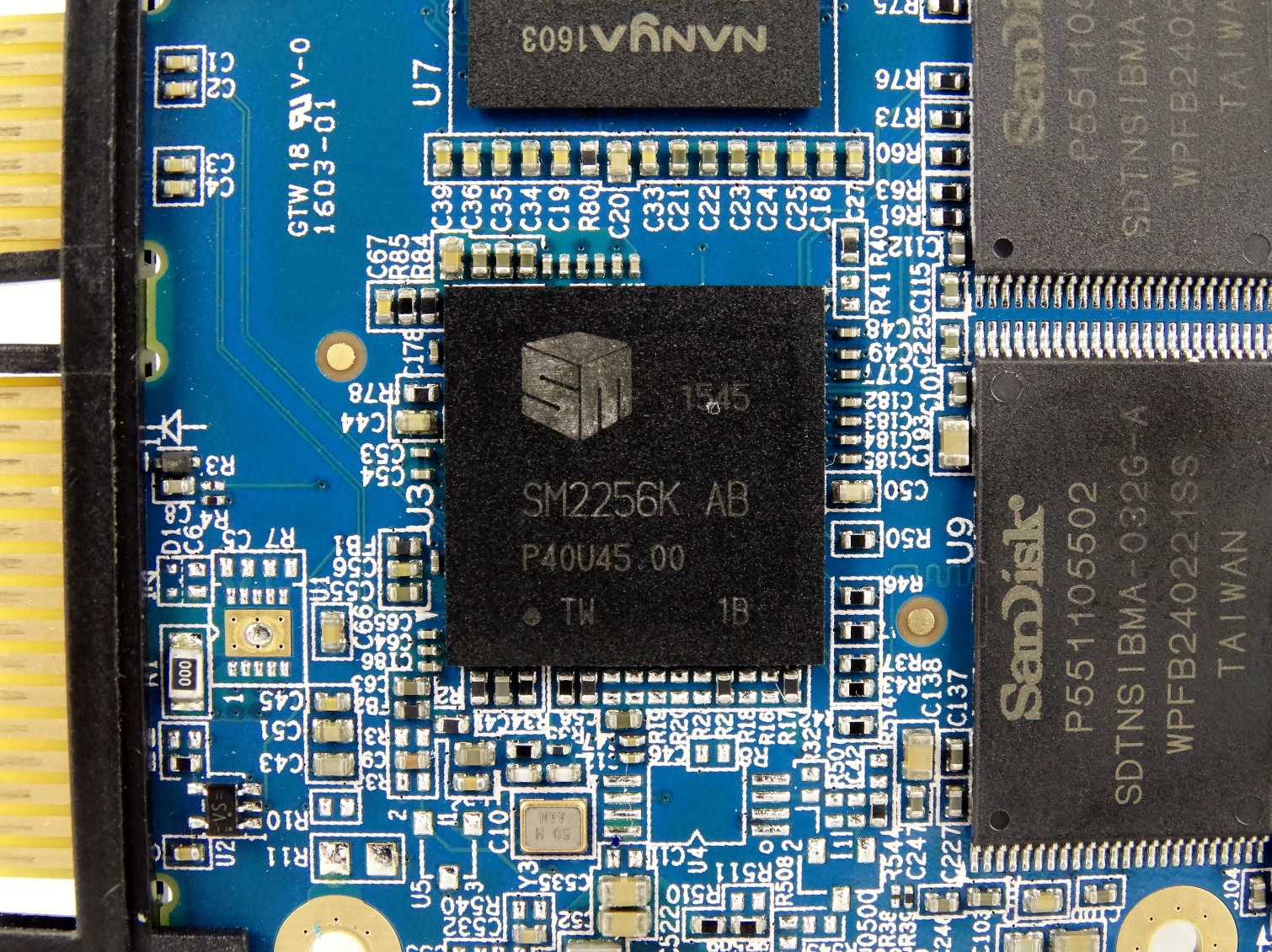
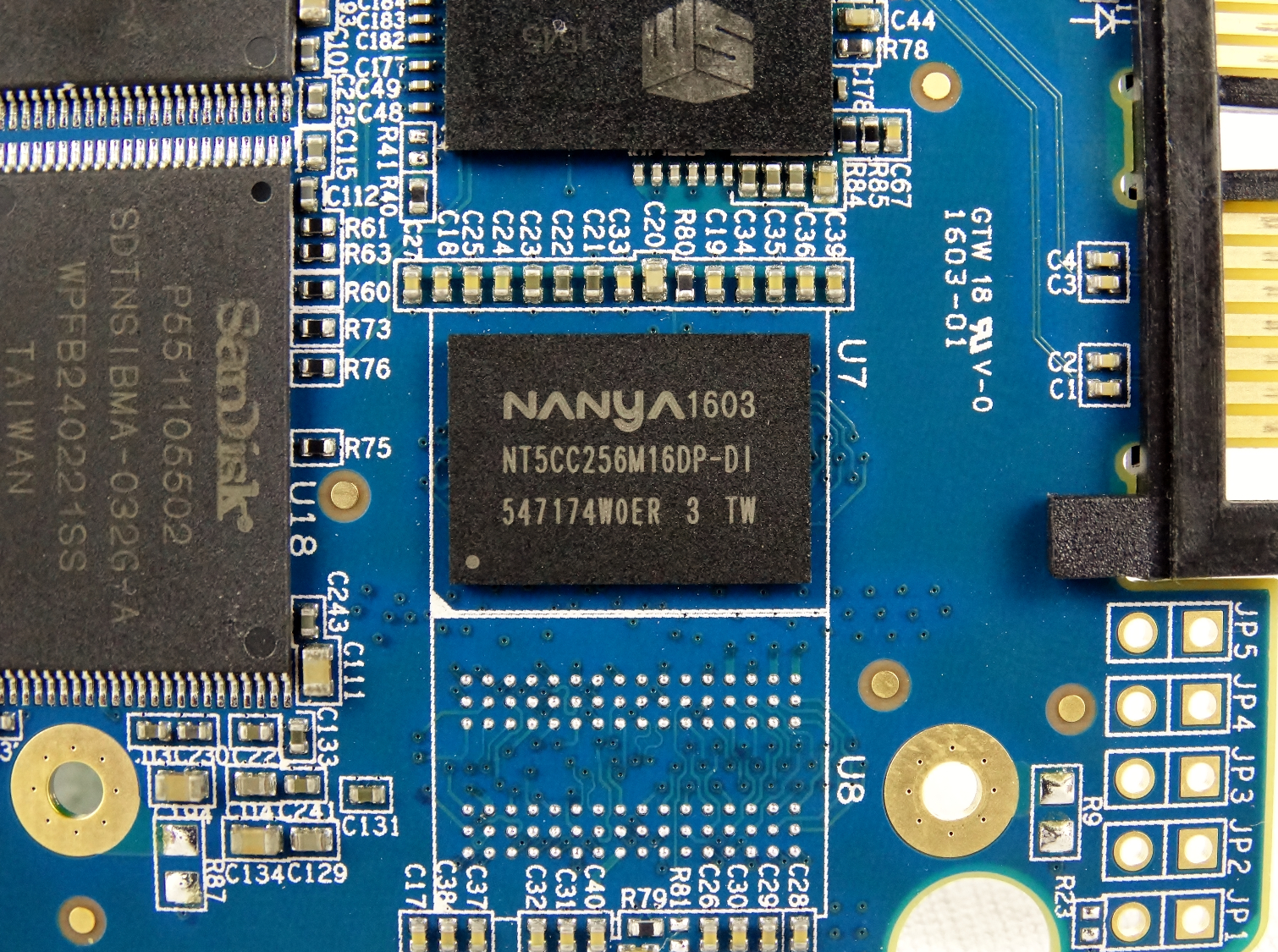
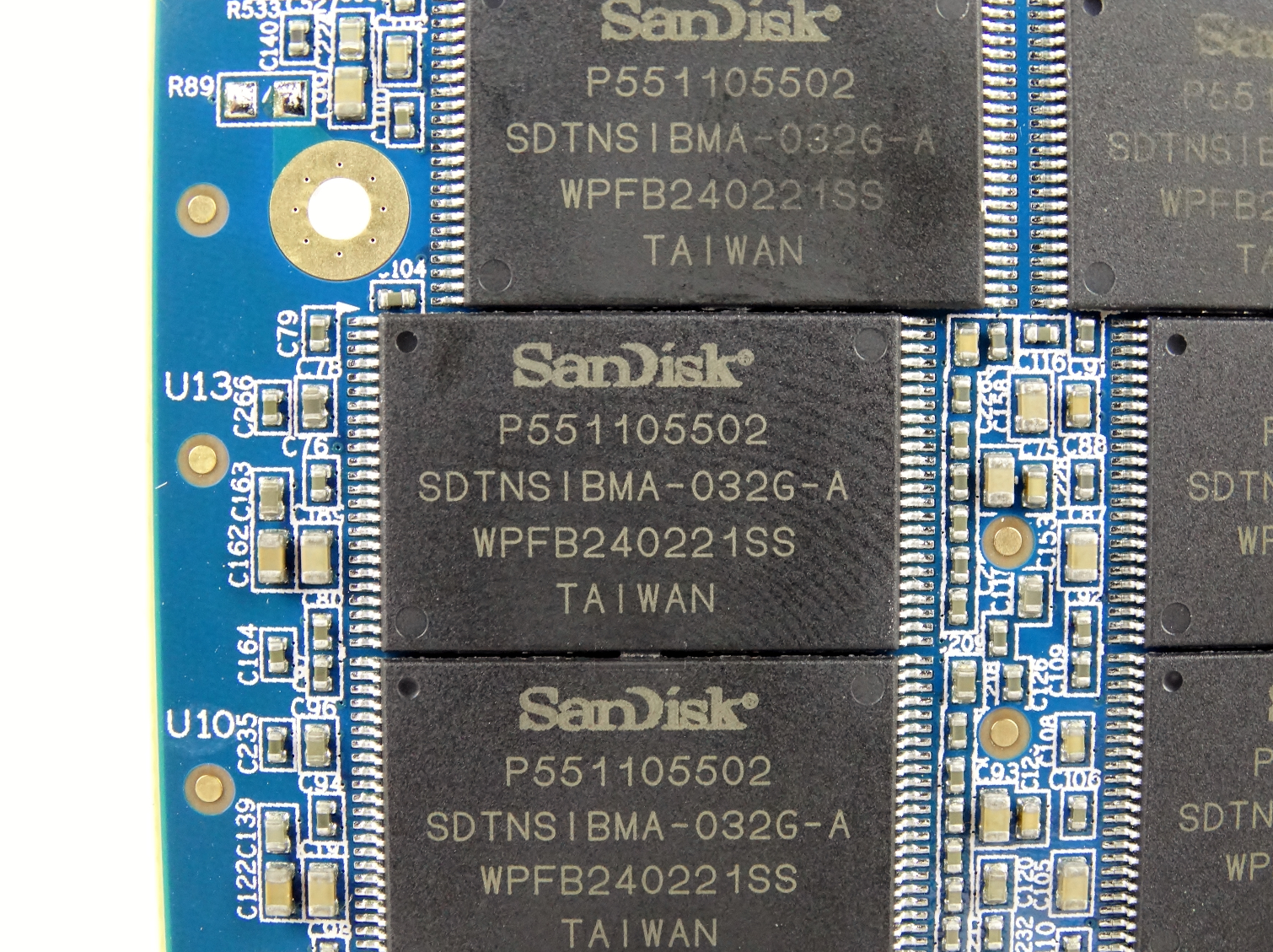
Other than the odd pairing of SM2256 and SanDisk 15nm TLC flash, the Triactor is a fairly basic SSD like many of the other products that compete in the low-cost market.
Mushkin's parent company, Avant Technology, always comes up with interesting ways to reduce manufacturing costs without reducing quality. Avant built the Triactor’s edge connector into the printed circuit board. Avant saves a few cents per drive by extending the edge out and embedding the SATA power and data connectors. This design also increases device integrity by removing the fragile plastic soldered component.
MORE: Best SSDs
MORE: Latest Storage News
MORE: Storage in the Forums
-
josejones LOL, why on earth with anybody waste their time making new SSD's with the soon to be obsolete SATA interface when we now have NVMe? Seems like a losing strategy making SSD's that are outdated and nearly obsolete the day they are released.Reply
Remember, VGA got pretty cheap too and it took like 10 years to get rid of it. We certainly need SATA for now but, it should start being considered obsolete by 2020 and begin to disappear from motherboards to make more room for more NVMe SSD connections. I just hope SATA doesn't turn into the next VGA and linger for 10 years. No point clinging to old obsolete, outdated and super slow technology that is capped at super slow speeds with an ACHI interface that will never ever get beyond 600MB/s. SATA has been a huge bottleneck keeping HD's and storage super slow for years.
"The SATA 1.5Gb/s bottleneck was quickly exceeded, followed by SATA 3.0Gb/s, and within a year of SATA 6.0Gb/s there were drives that could saturate even that interface. Faster alternatives were needed, but the interface was only part of the problem."
http://www.pcgamer.com/best-nvme-ssds/
"Starting in October, the DemoEval lab will be hosting clusters for Silicon Valley startups using all NVMe SSDs. A year ago, these were SAS/ SATA clusters so the change is clearly upon us."
https://www.servethehome.com/going-fast-inexpensively-48tb-of-near-sata-pricing-nvme-ssds/
NVLINK Unified Virtual Memory (UVM) = 5 to 12 times faster than PCIE 3.0
http://wccftech.com/nvidia-pascal-volta-gpus-sc15/
-
Game256 Samsung has changed the release dates of Samsung 960 (once again) on their site and set specific dates.Reply
The release date of Samsung 960 PRO 512GB/1TB is November 18. The release date of Samsung 960 EVO (all versions) and Samsung 960 PRO 2 TB is December 19. -
joz In all my years building and servicing computers for myself, family, friends and various odd-job commissions for strangers - I will, and will always trust Mushkin for my RAM, and lately - SSDs. As a budget-quality oriented guy, Mushkin is the one company who's RAM has never failed me; and their SSD's work well without putting pressure on the wallet. For most people, the high performance gains of the EVOs or other 'high performance' SSD's is a non-noticeable gain over any half-decent SSD. And Mushkin is not just a half-decent SSD. Mushkin is a GOOD SSD that is designed towards a specific segment without sacrificing quality. The Reactor was a fine 1TB drive, the ECO series was cheap, but of the six I've used so far in builds, not a single issue has popped up.Reply
I will definitively be looking into the Atlas series if I need more m.2 drives (which seems to be the growing trend.) But still, I love Mushkin ram the most.
Anyway, in my semi-professional system building and tech troubleshooter, and yes, biased opinion, Mushkin is one of the best tech companies out there and we should be supporting them and their products. -
apk24 Reply18809517 said:LOL, why on earth with anybody waste their time making new SSD's with the soon to be obsolete SATA interface when we now have NVMe? Seems like a losing strategy making SSD's that are outdated and nearly obsolete the day they are released.
Remember, VGA got pretty cheap too and it took like 10 years to get rid of it. We certainly need SATA for now but, it should start being considered obsolete by 2020 and begin to disappear from motherboards to make more room for more NVMe SSD connections. I just hope SATA doesn't turn into the next VGA and linger for 10 years. No point clinging to old obsolete, outdated and super slow technology that is capped at super slow speeds with an ACHI interface that will never ever get beyond 600MB/s. SATA has been a huge bottleneck keeping HD's and storage super slow for years.
You're going to have a hard time convincing anyone to reduce the number of SATA ports on a motherboard for a couple of reasons.
■ It's still a viable standard and will be for some time. HDDs, while on the way to obsolescence, aren't gone yet and it makes no sense to put an HDD on anything more than SAS/SATA 3.0. Until the day that a 1-2TB HDD and SSD cost the same, people will still buy HDDs.
■ For the foreseeable future, SATA SSDs will be cheaper than NVMe SSDs and there is definitely a budget market. The monitor analogy fails in this respect because a 720p monitor will cost roughly the same regardless of whether it uses HDMI or VGA.
■ SATA SSDs perform fast enough for most users. We have reached a point in tech development that the general user is more than happy with a Core i3, a few gigs of RAM, and a SATA SSD. You don't need much more for the average workload. If/when the average workload changes, we might see a stronger push towards faster/better components. However, atm it is purely the gaming/workstation type customers that are fueling the push for more power. I, and I'm assuming you, fall into this category.
■ It's a number on a box that could be easily beaten by another manufacturer; marketing depts won't be happy about it.While I agree that SATA should be heading the way of IDE, it's unlikely that anyone will accept a planned obsolescence by 2020. -
It would be nice if more products like USB flash drives and SSDs would ship in cardboard boxes like GPUs and such do. I understand it's smaller but just use a small box since SSDs are thankfully still made of metal and not plastic (yet...). Plastic doesn't degrade well, and hurts marine life so we're left with mutated fish to eat over time. Let's stop packaging things in so much plastic and use something like paper or cardboard.Reply
On another note, let's stop making flash drives out of plastic. I know that currently the PCB uses plastic, but there are alternatives that have not been tried yet because they sound absolutely ridiculous: chicken feathers and soybean oil. It was attempted over a decade ago and I guess that didn't take off. There are alternatives that we have yet to discover to make PCBs.
The enclosure of the USB drives can be rubber like the Patriot Memory RAGE or BOOST XT line. There are now wood enclosed flash drives as well. SSDs are still metal, so let's have recyclable packaging since it's a one time use thing. -
HERETIC-1 The 8K+Random read at QD1 was a pleasant surprise for TLC.Reply
If they could increase buffer size,it wouldn't be a bad drive.
I'm sure using quality SD flash it wouldn't effect endurance too much. -
Xajel Reply18809537 said:Samsung has changed the release dates of Samsung 960 (once again) on their site and set specific dates.
The release date of Samsung 960 PRO 512GB/1TB is November 18. The release date of Samsung 960 EVO (all versions) and Samsung 960 PRO 2 TB is December 19.
Are you sure of this ? I saw the Pro release date update but I didn't saw anything regarding Evo which I'm planning on have... -
Xajel Reply18809517 said:LOL, why on earth with anybody waste their time making new SSD's with the soon to be obsolete SATA interface when we now have NVMe? Seems like a losing strategy making SSD's that are outdated and nearly obsolete the day they are released.
I totally agree with wasting money on SATA but...
For now, there's two to three reasons
1- There's still no concrete way to add NVME SSD's like a regular 2.5/3.5 HDD's there's SATA Express yes but honestly that bulky cable is just a workaround, it's not even good enough to replace any SATA cable... basically it's a pathetic way to add a NVME SSD. and look around, how many SSD actually uses that thing ? hell almost nothing.. most solutions depends on M.2 or direct PCIe card.
2- Officially only x90 series chipset support NVME ( to boot from ), while technically any chipset x60 series and above can support it with simple UFEI bios update but most companies didn't do this update ( as they want you to upgrade )... I my self has Z77 motherboard and ASUS did not release any update ( and will never do ), there's a manual way to mod the bios in order to add support.. but honestly how many will actually bother them selfs with such route ?
3- SATA SSD's are still the cheapest way to go for SSD... NVME just started to be cheaper but still more expensive than SATA SSD's... and looking at how most peoples will do ( complications, costs & current system supports like most notebooks does not have NVME M.2 ) then most will go for a SATA solution because it will just work and a cheap way to upgrade their hardware with the least hustle and cost possible...
Personally, my next upgrade will be a 512GB SATA M.2 for my laptop ( SATA M.2 on a 2.5" adapter )... and a 512GB NVME M.2 on a PCIe card for my desktop which I'll need to mod the BIOS in order to be able to boot from...
later, I can take out that M.2 SATA SSD and use it as external fast flash on a smaller SATA M.2 -> USB housing... and I could directly put the NVME M.2 on a future motherboard ( with no PCIe adapter needed ) -
logainofhades I still need sata. When they can make 4tb+ SSD affordable, maybe then I will care to make the switch.Reply -
Nintendork Thing is that unless you work with huge chunks of data (like editing videos), there's little use of the 2GB+ sequential speeds of a NVME pci 4x drive.Reply
Random 4k reads and latency are nearly the same between a good sata and a good pcie based SSD.

